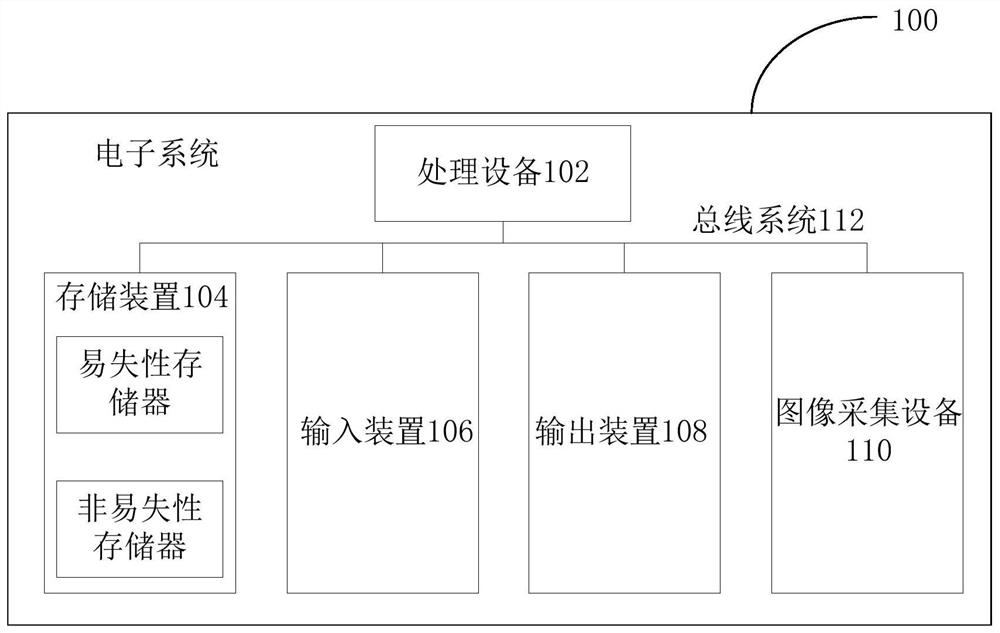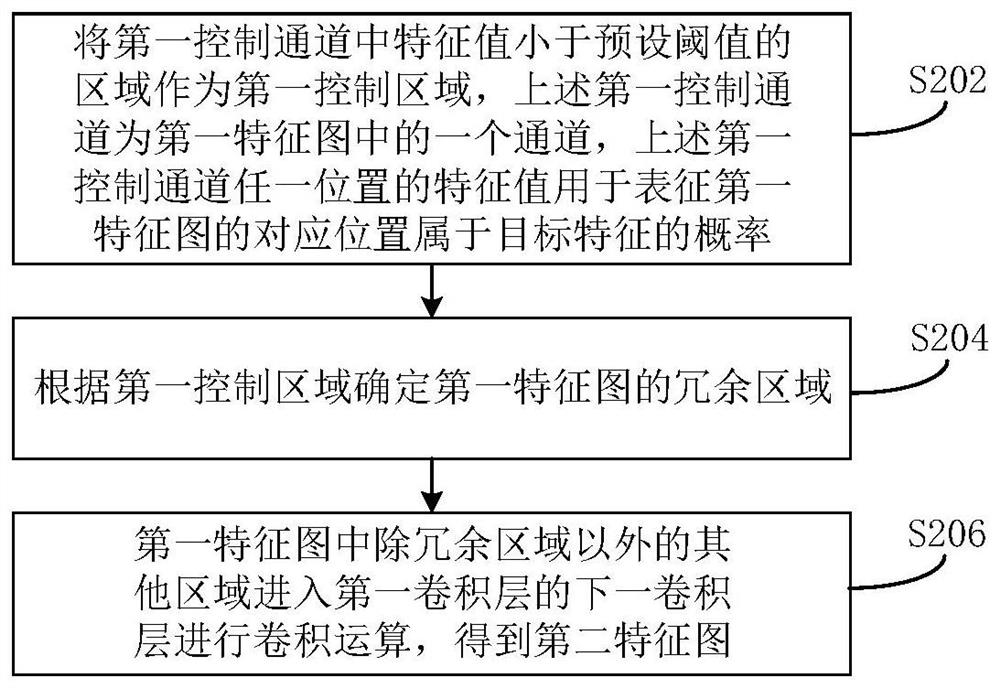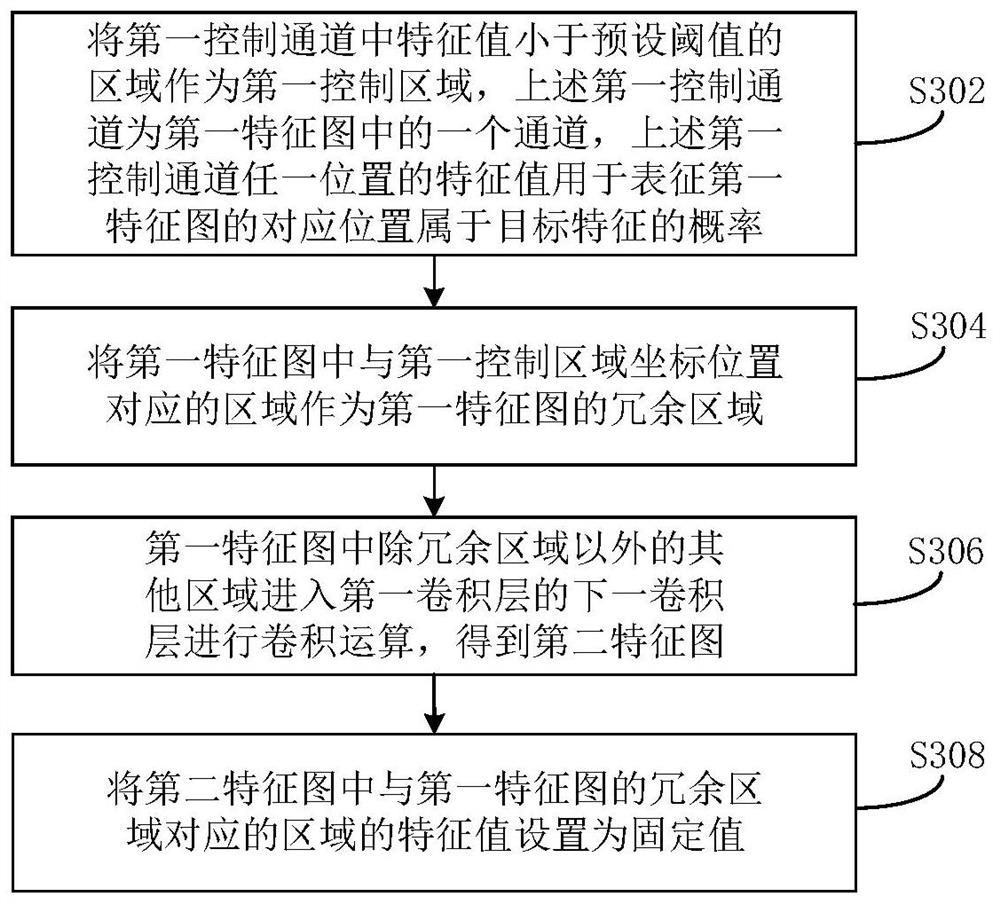Method and device for performing convolution calculation on image by using convolutional neural network
A convolutional neural network and convolutional operation technology, applied in the field of convolutional neural networks, can solve the problems of slow speed, high power consumption, and low efficiency of convolutional neural networks, so as to reduce the amount of calculation, reduce power consumption, and prevent invalidation. Calculated effect
- Summary
- Abstract
- Description
- Claims
- Application Information
AI Technical Summary
Problems solved by technology
Method used
Image
Examples
Embodiment 1
[0030] First, refer to figure 1 An example electronic system 100 for implementing the method and apparatus for performing convolution calculation on an image using a convolutional neural network according to an embodiment of the present invention will be described.
[0031] like figure 1 A schematic structural diagram of an electronic system is shown, the electronic system 100 includes one or more processing devices 102, one or more storage devices 104, input devices 106, output devices 108 and one or more image acquisition devices 110, these components The interconnections are via bus system 112 and / or other forms of connection mechanisms (not shown). It should be noted that figure 1 The components and structures of the electronic system 100 shown are exemplary rather than limiting, and the electronic system may also have other components and structures as required.
[0032]The processing device 102 may be a gateway, or an intelligent terminal, or a device including a cent...
Embodiment 2
[0039] This embodiment provides a method for performing convolution calculation on an image using a convolutional neural network. In the method, the image is first input into the convolutional neural network; the first convolutional layer of the convolutional neural network outputs the first feature map, and the first convolutional neural network outputs the first feature map. A feature map includes a first control channel, and the first convolutional layer is an intermediate convolutional layer of a convolutional neural network.
[0040] The convolutional neural network in this embodiment is mainly used to classify images, target detection or target recognition. The calculation of the convolutional neural network can extract the characteristics of people or objects in the image, and identify the people or objects in the image. Or count the people or objects in the image, etc.
[0041] A convolutional neural network usually consists of one or more convolutional layers and a fu...
Embodiment 3
[0056] This embodiment provides another method for performing convolution calculations on images using a convolutional neural network, which is implemented on the basis of the above-mentioned embodiments; this embodiment focuses on the redundant process of determining the first feature map according to the first control region. The specific process of the remaining area. like image 3 The flow chart of another method for performing convolution calculation on an image using a convolutional neural network is shown, including the following steps:
[0057] Step S302, taking the area in the first control channel whose eigenvalue is smaller than the preset threshold value as the first control area, the above-mentioned first control channel is a channel in the first feature map, and the eigenvalue of any position of the above-mentioned first control channel is used The probability that the corresponding position in the first feature map belongs to the target feature.
[0058] The f...
PUM
 Login to View More
Login to View More Abstract
Description
Claims
Application Information
 Login to View More
Login to View More - R&D
- Intellectual Property
- Life Sciences
- Materials
- Tech Scout
- Unparalleled Data Quality
- Higher Quality Content
- 60% Fewer Hallucinations
Browse by: Latest US Patents, China's latest patents, Technical Efficacy Thesaurus, Application Domain, Technology Topic, Popular Technical Reports.
© 2025 PatSnap. All rights reserved.Legal|Privacy policy|Modern Slavery Act Transparency Statement|Sitemap|About US| Contact US: help@patsnap.com



